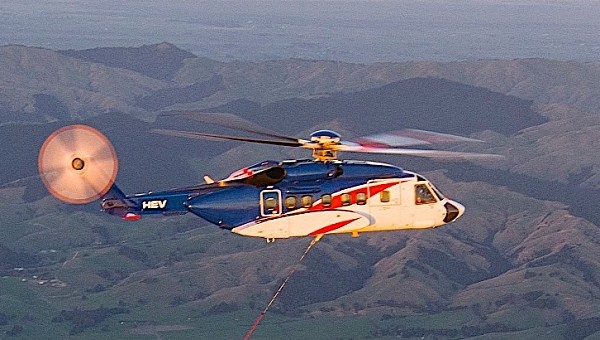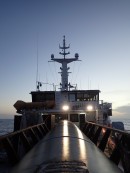Ever since Elon Musk’s SpaceX proved recoverable rocket boosters are a thing, several other companies have joined the game and are now making such pieces of hardware that can land themselves after sending off cargo into space. But one company is trying a different approach when it comes to recovering boosters.
Back in May this year, Rocket Lab used a Sikorsky S-92 helicopter to snatch, mid-air, the booster of an Electron rocket as it descended back to Earth. The capture was achieved at an altitude of 173 miles (278 km) by capturing the rocket part by its parachute line.
The mission, dubbed There And Back Again, was a success, and a first of its kind. It inspired Rocket Lab to try again, and it will do so later this week, during a mission called Catch Me If You Can.
The same modified Sikorsky S-92 helicopter will be used to get hold of the booster launching the Electron’s rocket 32nd mission, for now scheduled for November 4. Rocket Lab says the same procedures used back in May will apply this time as well.
According to the mission profile, the helicopter will fly 184 miles (269 km) off New Zealand’s Banks Peninsula. Seven minutes and some change into the launch, the booster’s parachute will deploy, slowing the thing down from 5,157 mph (8,300 kph) to just 22 mph (36 kph) as it falls to the ground.
The helicopter will match Electron’s speed and descent towards it from above, using a hook to try and snatch the booster by the parachute line. Once secured, it will be transported to Rocket Lab’s Auckland Production Complex, where it will be assessed, and if all goes well, deemed ready for re-use.
The Electron rocket carries something called the Mesospheric Airglow/Aerosol Tomography and Spectroscopy (MATS) satellite, a creation of OHB Sweden. Originally scheduled to launch on a Russian rocket, MATS is supposed to “investigate atmospheric waves and better understand how the upper layer of Earth’s atmosphere interacts with wind and weather patterns closer to the ground.”
The mission, dubbed There And Back Again, was a success, and a first of its kind. It inspired Rocket Lab to try again, and it will do so later this week, during a mission called Catch Me If You Can.
The same modified Sikorsky S-92 helicopter will be used to get hold of the booster launching the Electron’s rocket 32nd mission, for now scheduled for November 4. Rocket Lab says the same procedures used back in May will apply this time as well.
According to the mission profile, the helicopter will fly 184 miles (269 km) off New Zealand’s Banks Peninsula. Seven minutes and some change into the launch, the booster’s parachute will deploy, slowing the thing down from 5,157 mph (8,300 kph) to just 22 mph (36 kph) as it falls to the ground.
The helicopter will match Electron’s speed and descent towards it from above, using a hook to try and snatch the booster by the parachute line. Once secured, it will be transported to Rocket Lab’s Auckland Production Complex, where it will be assessed, and if all goes well, deemed ready for re-use.
The Electron rocket carries something called the Mesospheric Airglow/Aerosol Tomography and Spectroscopy (MATS) satellite, a creation of OHB Sweden. Originally scheduled to launch on a Russian rocket, MATS is supposed to “investigate atmospheric waves and better understand how the upper layer of Earth’s atmosphere interacts with wind and weather patterns closer to the ground.”








